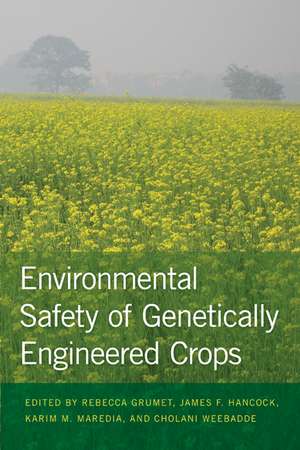Environmental Safety of Genetically Engineered Crops
Editat de Rebecca Grumet, James F. Hancock, Karim M. Maredia, Cholani Weebaddeen Limba Engleză Hardback – 31 mai 2011
Since the mid-1990s, when the technology was first introduced, the cultivation of genetically engineered (GE) crops has grown exponentially. In the U.S. alone, adoption rates for transgenic cotton, corn, and soybeans are between 70–90%. Across the globe, 14 million farmers grow GE crops in more than twenty countries. Yet many countries are discussing and debating the use and adoption of GE technology because of concerns about their impact on the environment and human health. Now, in this comprehensive handbook, a team of international experts present the scientific basis for GE crops, placing them in the context of current agricultural systems, and examining the potential environmental risks posed by their deployment. An integrated approach to an increasingly hot and globally debated topic, the book considers the past, present, and future of GE crops, and offers an invaluable perspective for regulation and policy development.
Preț: 322.16 lei
Nou
Puncte Express: 483
Preț estimativ în valută:
61.65€ • 63.69$ • 51.31£
61.65€ • 63.69$ • 51.31£
Carte indisponibilă temporar
Doresc să fiu notificat când acest titlu va fi disponibil:
Se trimite...
Preluare comenzi: 021 569.72.76
Specificații
ISBN-13: 9781611860085
ISBN-10: 1611860083
Pagini: 400
Dimensiuni: 152 x 229 x 36 mm
Greutate: 0.66 kg
Editura: Michigan State University Press
Colecția Michigan State University Press
ISBN-10: 1611860083
Pagini: 400
Dimensiuni: 152 x 229 x 36 mm
Greutate: 0.66 kg
Editura: Michigan State University Press
Colecția Michigan State University Press
Descriere
In this comprehensive handbook, a team of international experts present the scientific basis for GE crops, placing them in the context of current agricultural systems, and examining the potential environmental risks posed by their deployment. An integrated approach to an increasingly hot and globally debated topic, the book considers the past, present, and future of GE crops, and offers an invaluable perspective for regulation and policy development.
